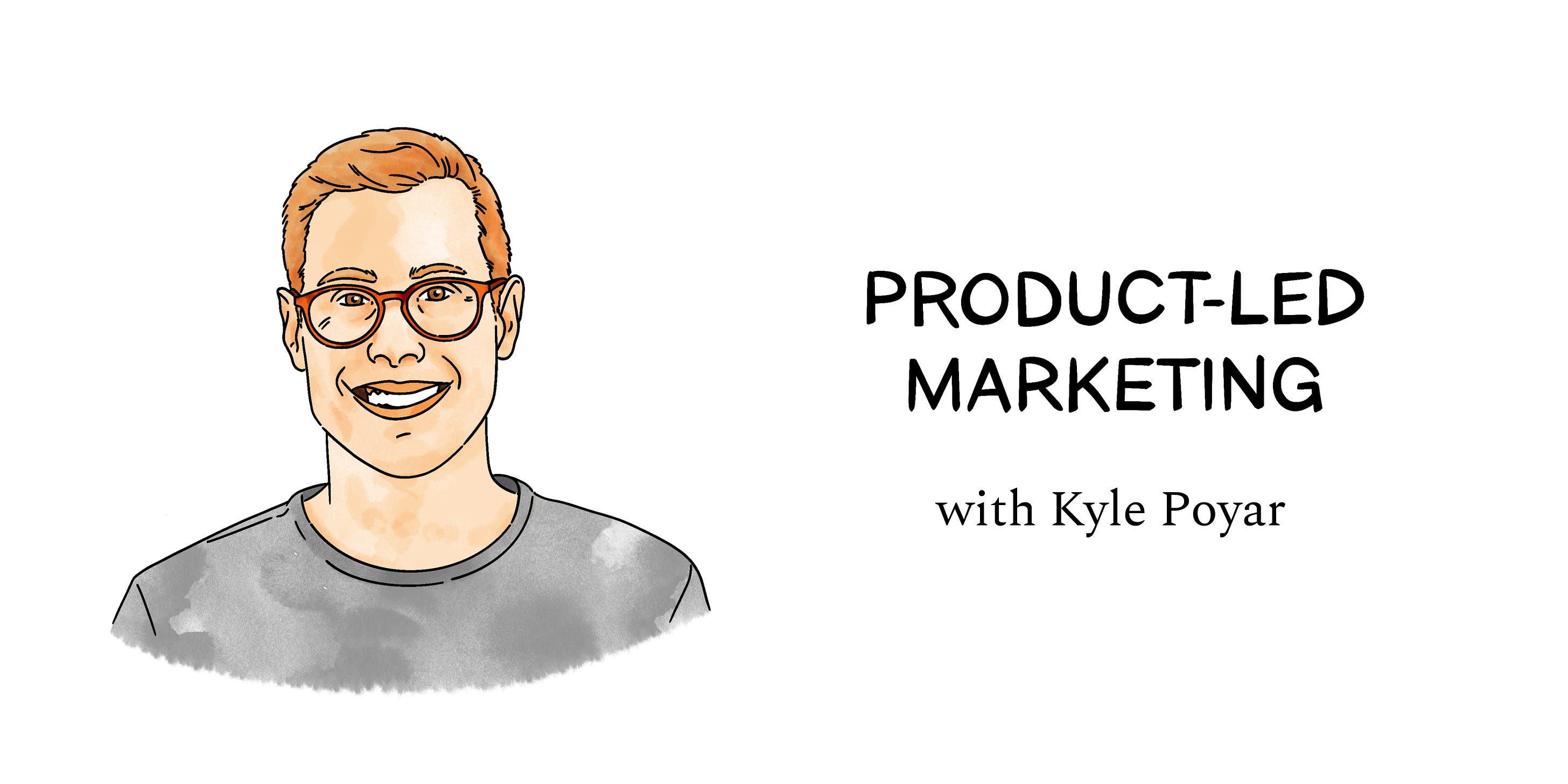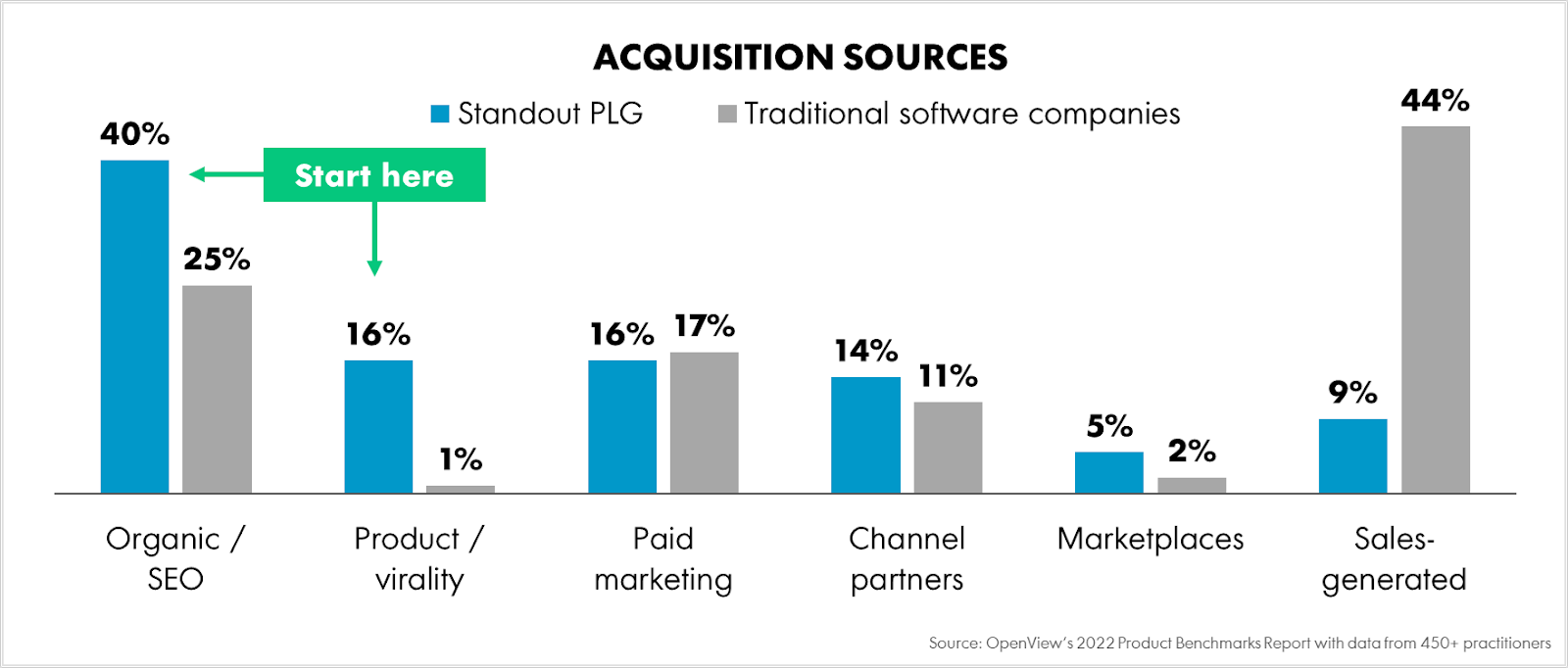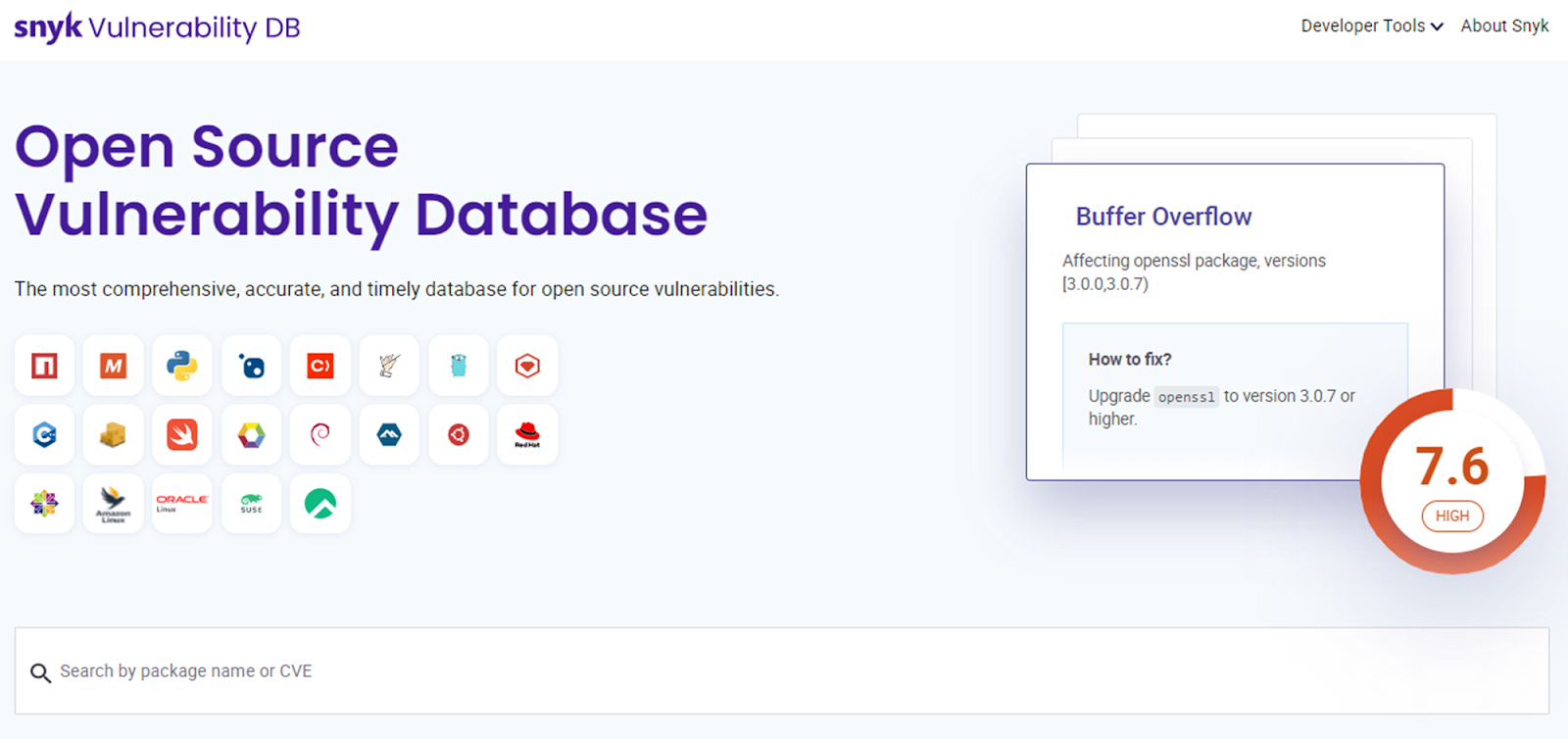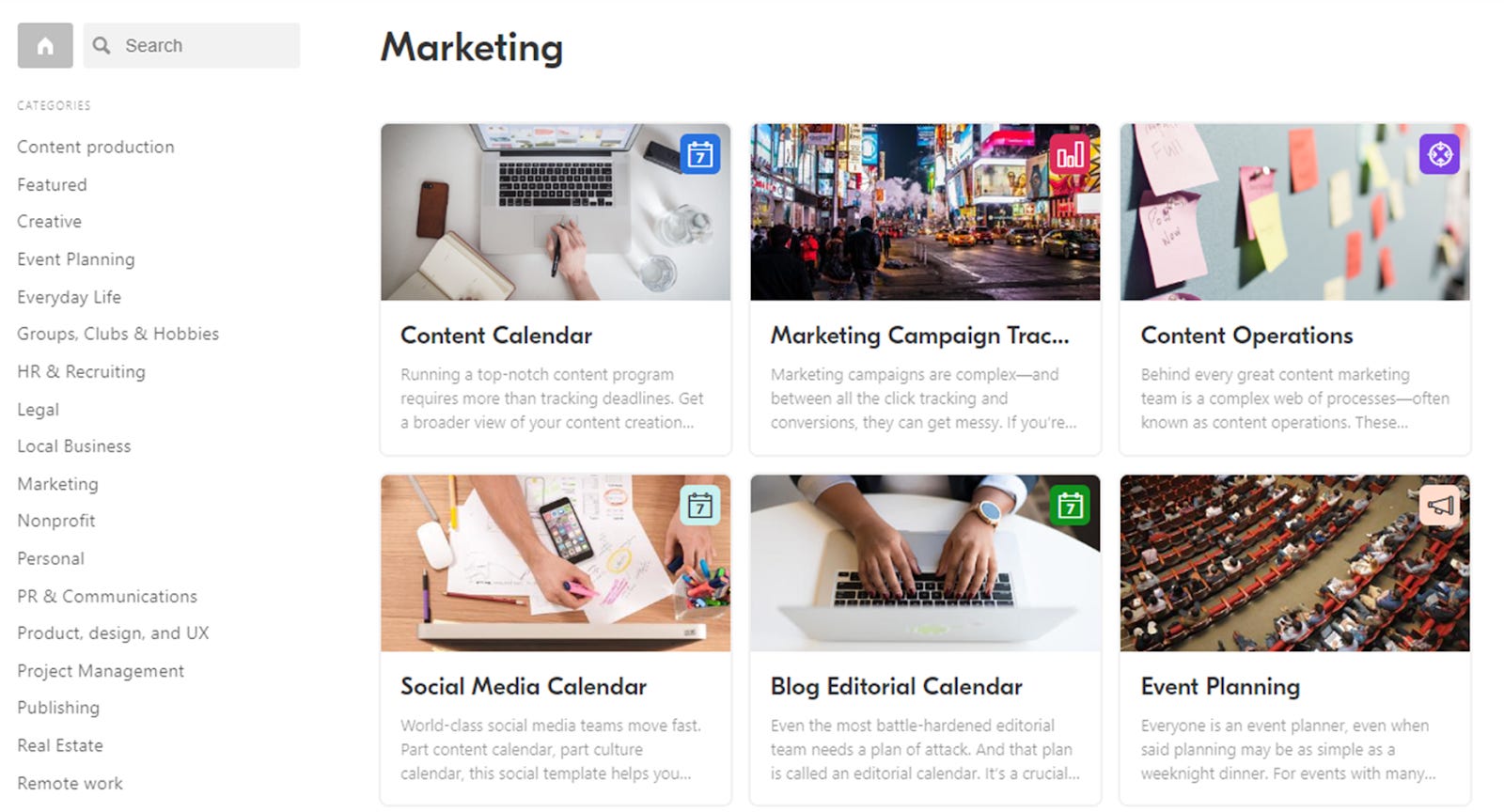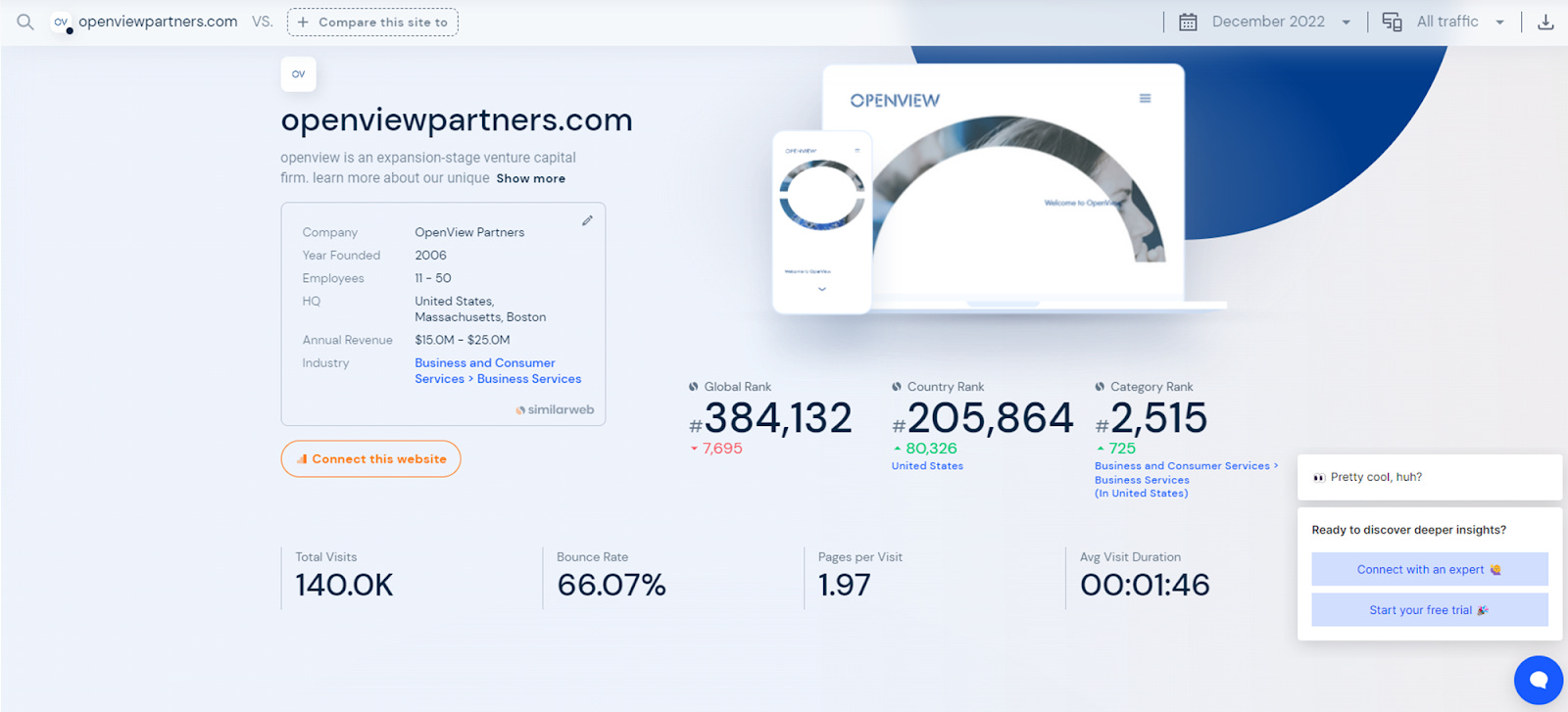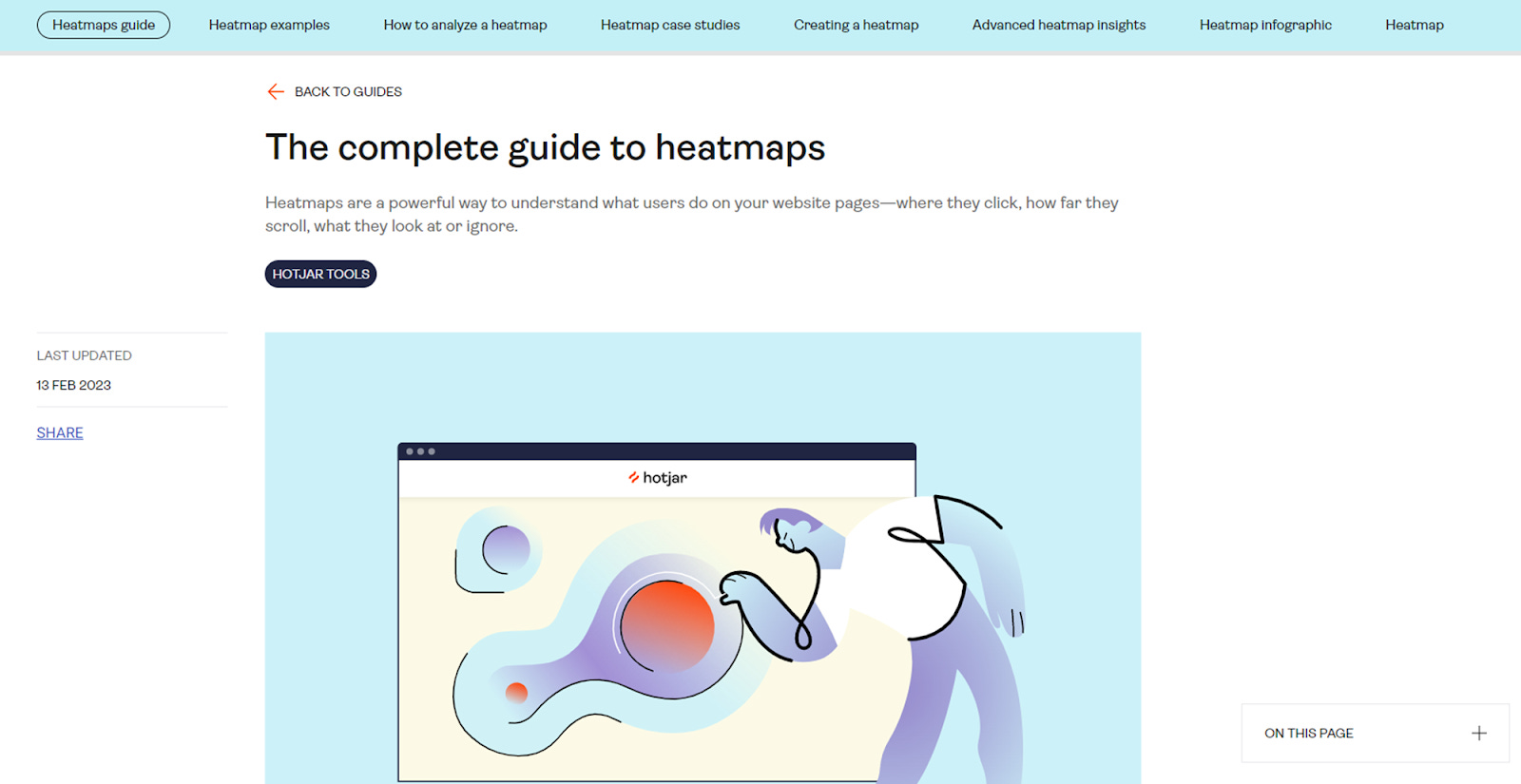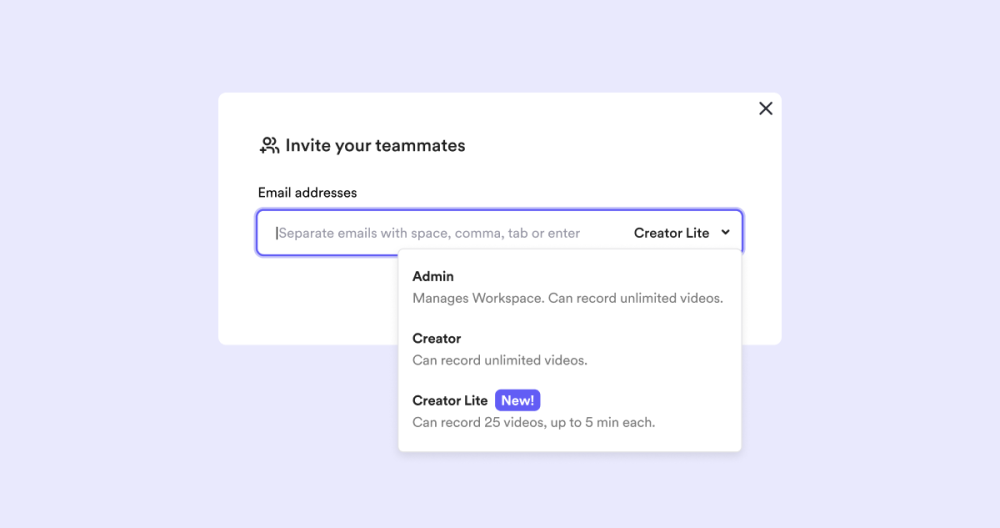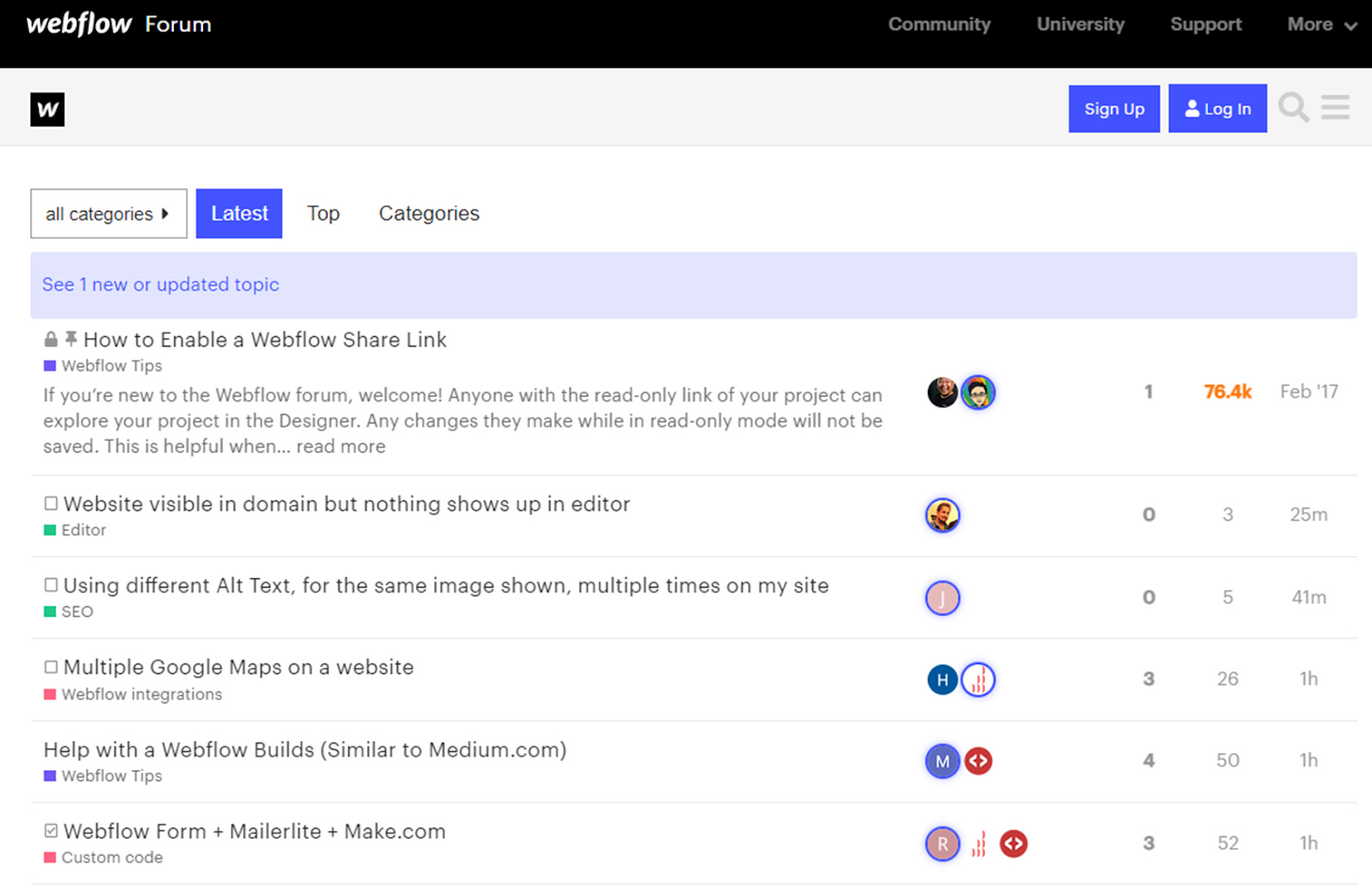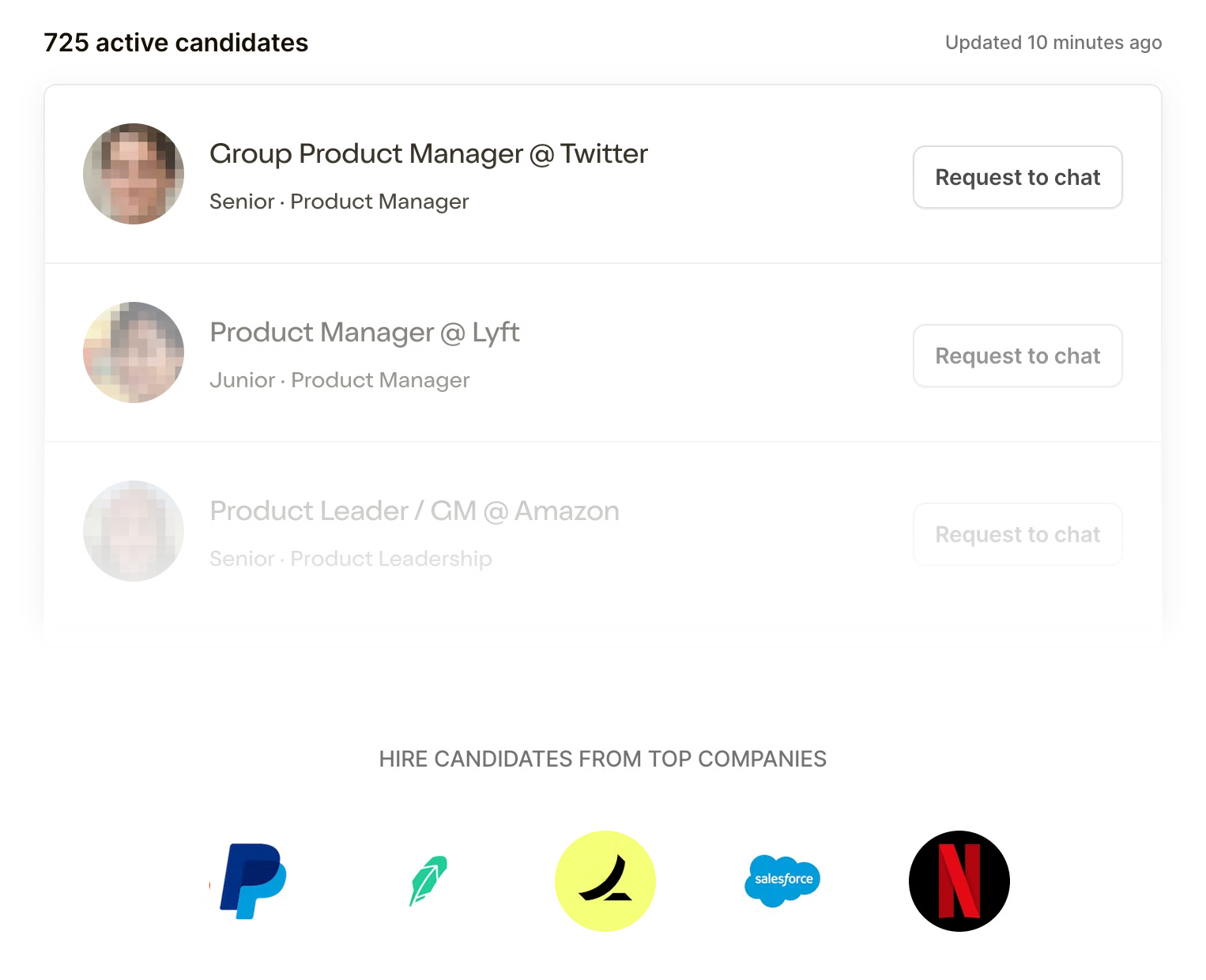Lenny's Newsletter - Product-led marketing
👋 Hey, Lenny here! Welcome to this month’s ✨ free edition ✨ of Lenny’s Newsletter. Each week I tackle reader questions about building product, driving growth, and accelerating your career. If you’re not a subscriber, here’s what you missed this month: Subscribe to get access to these posts, and every post. Kyle Poyar is one of those people that I knew I’d eventually collaborate with. As a longtime partner at OpenView, he’s been studying, working with, and writing about product-led growth longer than anyone I know. When I pitched him on writing a guest post, he shared a topic that I immediately knew would resonate with this audience. Like all of my favorite guest posts, it’s full of tactical advice, real-life examples, and actionable next steps. I hope you find it as useful as I did. For much more from Kyle, make sure to subscribe to his newsletter, Growth Unhinged, and follow him on LinkedIn. I won’t sugarcoat it: making the math work with product-led growth is hard. It requires attracting a vast pool of potential users who are interested in your product, all while spending very little to attract that audience (i.e. near $0 customer acquisition cost, or CAC). As a rule of thumb, you’re looking at spending less than $1 per unique visitor, compared against benchmark costs of $1 to $5 per for traditional B2B products. Let’s unpack the PLG funnel math, pulling on data from OpenView’s 2022 Product Benchmarks survey. If an average freemium PLG product attracts 1,000 unique visitors to their website each day, that translates to:
⇒ You’ll make $1-$2 for each unique visitor When you add all that up, you can expect to make $1 to $2 in first-year spend for every unique visitor. And that’s just top-line revenue on new users. This doesn’t account for churn (which can be notoriously high for single-user accounts) or your costs to serve those customers (e.g. salaries, customer support, cloud costs, or sales commissions). Your CAC needs to stay below $1 per unique visitor so you can cover these costs and facilitate efficient ongoing growth. Attracting users for PLG products calls for a new playbook, which I refer to as product-led marketing. Product-led marketing means making it easy for end users to discover your product when they need it, through two primary strategies:
Each PLG product has its own growth engine and its own spin on product-led marketing. But there are striking similarities in how this looks across the top PLG products. Standout PLG products like Airtable, Miro, Snyk, Webflow, and Zapier disproportionately attract users through two channels: organic search and SEO (40% of new users), and product virality (16% of new users). Start here before spreading your resources across channels like paid advertising, channel partnerships, cloud marketplaces (e.g. listing on the Shopify App Store or AWS Marketplace), and outbound business development. Examples of product-led marketingLet’s explore these two acquisition sources—organic search and product virality—in product-led marketing. Usually one of these two channels will be your primary source of acquiring new users. Neither requires paying per click, which helps you scale efficiently. 1. Organic search and SEOIf your goal is to be easily discoverable by end users in their moment of need, organic search is the obvious starting point. The best PLG products treat search-oriented content as a natural extension of their product experience and as something that offers real value to users. Here’s what that looks like in practice. i. Free sidecar products built with marketing intentUsually we build a product and then market it. What if you flipped the script and built products that were specifically meant to grow your primary product? These “sidecar” products help you attract a high-intent audience, add value to their experience (no paywall or gates required), and then nudge visitors to create an account (often to save their progress or take action on what they’ve learned). Snyk’s Open Source Vulnerability Database makes for a great example. It’s a comprehensive database of open source vulnerabilities across apps and operating systems. Underlying this product is a rich set of content that gets exposed to organic search and can be easily discovered in the developer’s workflow. Snyk’s tool gets regularly updated as new vulnerabilities are found, giving users a reason to come back, and incorporates user-generated content by asking visitors to disclose a new vulnerability. My favorite part: Snyk has a clear call to action to try their core product. Instead of checking vulnerabilities manually, why not let Snyk test all of your apps and help you automatically fix vulnerabilities in your code? Related examples: Similarweb’s Top Websites Ranking, HubSpot’s Website Grader, Ahrefs’s Free Backlink Checker, Zenefits’s Health Insurance Marketplace, Copy.ai’s Free Cold Email Generator ii. Templates tied to what users are trying to do with your productIf you test out only one product-led marketing campaign, this would be the one to try. Many PLG products can be used in a variety of ways to accomplish different jobs-to-be-done. That’s where templates come into play. Templates help you attract a diverse set of potential users by showing how you help them achieve their specific goal in their own language. Consider the case of Airtable, which lets teams create low-code and no-code apps. As a marketing leader, I might not realize I need a low-code app builder. But I do know that I need a better content calendar or perhaps a better way to track my marketing campaigns. Airtable has compiled more than 200 pre-built templates around these popular jobs-to-be-done, each of which has its own SEO-optimized landing page for maximum discoverability as well as a no-brainer call to action (it’s simply “use template”). What’s better is that templates don’t just attract new users; they help users get activated quickly and make them feel like your product was purposely built for them. Templates can also be a way to kickstart a community strategy where you source templates from your power users (for example, Miro’s Miroverse) or even let users monetize the templates they’ve created, as Notion does. Related examples: Notion’s Template Gallery, Miro’s Templates Library, SafetyCulture’s Safety Checklist Templates, SurveyMonkey’s Survey Templates iii. Programmatic “how to” landing pagesYou can take this concept of templates even further with programmatic landing pages tied to all of the various combinations of your product use cases. Not much content is needed—just enough to convey value and the context of how you help a user achieve their goal—but this content gets multiplied to be discoverable no matter the user’s context. Zapier’s library of more than 70,000 “how to connect x + y app” landing pages makes for a classic case in point, as others have highlighted in detail. (Lenny has a great newsletter and podcast with tips on how to do this, by the way.) Another example I’m digging is Similarweb, the website traffic software provider. Similarweb attracts nearly 10 million website visitors each month, according to the company’s own traffic analysis tool, and programmatic landing pages are an important part of their strategy. They have free, ungated, and SEO-friendly landing pages built out for nearly every website, which include background on the company, the traffic ranking relative to other websites, and useful insights into what that traffic looks like. That allows Similarweb to get found for hyper-specific searches like “Google traffic ranking” or, in my case, “openviewpartners.com website traffic.” Similarweb’s marketing provides immediate value to the visitor—in the form of a quick answer to their question—and then nudges those visitors to sign up for a free account in order to get even more actionable insights. Related examples: Zapier’s “how to connect x + y app” landing pages, Grammarly’s grammar FAQ landing pages (e.g. No-one, Noone or No one—Which Is Right?) iv. Product education and documentationMost tech companies have put significant energy into documentation to let users troubleshoot problems and get help on their own. This documentation tends to be hard to find, poorly indexed in search, sitting on a separate web domain, or lacking in quality calls to action back to your product. Put simply, you could be sitting on a content goldmine without even realizing it. My first advice is to put what you already have to work. Cypress, an open source web testing company in OpenView’s portfolio, makes for a great example here, with well-organized help material that is regularly updated, includes compelling interactive content, and nudges visitors to start using Cypress for themselves. From there, go on offense with curated hubs around key product pillars, particularly ones with substantial search volume. Hotjar, the website analytics company, does this to great effect with hubs around features like heatmaps and session recordings. In fact, the company has the number one result on organic search for “heatmaps,” “heatmap tool,” and “heatmaps guide.” They’ve done that by addressing the high-level intent of the visitor (“What is a heatmap?”), challenging the visitor’s question and raising the stakes, and then addressing a broad range of related questions. Hotjar’s product hubs break down detailed and complex topics into bite-size, digestible chunks. Related examples: Ahrefs’s “how to do keyword research” guide, Shopify’s guide to starting an e-commerce business 2. Product virality for PLG productsViral loops, while rarely the primary acquisition channel, can be extremely powerful as well. After all, it’s far easier (and cheaper) to generate growth from your existing product users than it is to acquire totally new ones. There are two types of virality for PLG products: external and internal. External virality is the classic form of virality through multiplayer use and product exposure, which we’ve come to associate with collaboration products like Zoom, Loom, or Typeform. Many of these products are inherently viral—they’re only valuable when used in multiplayer mode—and it’s extremely hard to manufacture external virality when it’s not natural. Internal virality, on the other hand, applies to nearly every bottom-up PLG product as it gets adopted across an organization. Your first task is to figure out how viral your product is today: how many additional users does one existing user bring? This can be extremely tricky to measure in the real world, especially for B2B products where a user may get exposed to the product but not have an immediate need for it. A proxy measurement is your direct traffic via Google Analytics—the share of people who come directly to your website without doing a Google search or clicking on an ad. From there, you can systematically accelerate virality. i. Add and promote social features in your productCalendly, the appointment scheduling software (disclosure: an OpenView portfolio company), is well known for its external viral loop where users invite people outside of their company to schedule a meeting. What you might not realize is that Calendly has systematically added features to promote internal virality, where the first Calendly user in an account brings in others from inside their company. One clear example is around creating a new event type. Calendly asks users which type of meeting they’re organizing: a one-on-one (the classic Calendly use case), group meeting, collective meeting, or round-robin? If the user is a sales rep looking to bring a CSM or BDR into a customer call, for example, it’s a no-brainer to create a group meeting and then plug your colleagues’ availability directly into your Calendly account. (You should listen to Lenny’s conversation with CPO Annie Pearl to learn more about Calendly’s growth strategy.) ii. Remove friction from being socialYou’re likely putting up barriers that get in the way of users adopting these social features. Loom, the async video software, may be an inherently viral product, but even Loom had friction that slowed its virality. In the early days, Loom had only two types of users: paid creators (who could record Looms) and free viewers (who could not). This model worked well at the time, but it didn’t easily enable new folks to give Loom a try and become creators themselves. To solve for that friction, the company launched its Creator Lite tier in June 2021. Creator Lite users can record up to 25 videos with a five-minute limit before they’re asked to pay, which offers a bridge from viewing to creating to paying. A bonus of the Creator Lite tier: it allowed Loom to introduce a successful user referral program via gamified storage incentives. Pro tip: If possible, avoid blocking the ability to invite new users into the product. I much prefer the Figma approach, where new editors can be invited for free at any time. Team admins receive an email before payment each month that recaps what the bill will be and highlights any new editors, allowing them to downgrade editors to viewers in order to avoid extra costs. iii. Add social elements around your productOnce you’ve done that, you’ll want to add social elements around your product, exposing your brand to people who would not otherwise create an account. Consider the milestones that your users achieve during their product experience and might want to share with their colleagues. Analytics, insights, and reports are great ways for users to showcase your product in a way that feels natural to their workflow. Ask yourself: Can users easily share these milestones via email, IRL, or—my personal favorite—via a Slack notification? B2B companies can also look at adding a watermark to their product, especially for free or self-service customers (bonus points if that watermark is URL-enabled!). You can reserve removing the watermark for businesses that want to pay for it. You could even extend this thinking to building community, which is essentially virality that happens outside of your product. Community isn’t just another Slack group or forum that nobody asked for; it needs to be designed for and with your users. Webflow, the no-code website builder, is a great case study. While community was a critical pillar in the company’s early growth efforts, it was actually a last-minute addition, according to co-founder Bryant Chou. The Webflow team spun up a Discourse account only hours before opening up its beta; now that community counts more than 75,000 members. Their insight was that Webflow’s audience would be freelancers who work by themselves and would be hungry for a place to hang out, provide support for each other, and show off how to do cool stuff in Webflow. Related examples: Figma’s Community, Procore’s Construction Network, Pendo’s acquisition of the Mind the Product community, Pocus’s Product-Led Sales Community Final words of adviceThe good news is that PLG creates an opportunity to attract users in a way that’s different from legacy competitors and allows you to scale more efficiently.
Organic search and product virality represent 56% of new users for the average PLG company. Start with one (or both) of these channels and then layer on incremental channels like paid marketing, marketplace listings, channel partners, or outbound business development to amplify your efforts. Every PLG business is unique, and what’s worked for others might not be worth replicating for your product and target audience. Take these concepts as inspiration, then vet the potential ideas before you roll them out. Ask questions like:
Much of this piece dealt with minimizing friction that blocks a user from signing up for or sharing your product. Keep in mind that some level of friction might actually be a good thing. PLG products need to motivate users not only to sign up but to put the work into being successful with the product. This might translate into your marketing team spending time on punching up your messaging, using website real estate to show off how your product works (bonus points for an interactive product tour), or nurturing visitors who aren’t ready to get started. While this edition focused on product-led marketing, your target KPI shouldn’t be metrics like website traffic or monthly signups. To optimize your marketing, focus on product activation. Activated signups—the number of new users who reach their aha moment with your product—is the best north star for PLG marketers, in my experience. When marketers are tightly embedded in your product strategy, you’re headed for a winning PLG strategy, no complicated math required. — Thank you, Kyle! Make sure to follow Kyle at Growth Unhinged and LinkedIn. Have a fulfilling and productive week 🙏 📣 Join Lenny’s Talent Collective 📣If you’re hiring, join Lenny’s Talent Collective to start getting bi-monthly drops of world-class hand-curated product and growth people who are open to new opportunities. If you’re looking for a new gig, join the collective to get personalized opportunities from hand-selected companies. You can join publicly or anonymously, and leave anytime. ❤️🔥 Featured job opportunities
If you’re finding this newsletter valuable, share it with a friend, and consider subscribing if you haven’t already. Sincerely, Lenny 👋 |
Older messages
Taxi mafias, cash vaults, and 100% MoM growth: The story behind Southeast Asia’s biggest startup | Kevin Aluwi (Go…
Sunday, March 26, 2023
Listen now (63 min) | Brought to you by Coda—Meet the evolution of docs | Rows—The spreadsheet where data comes to life | Lenny's Job Board—Hire the best product people. Find the best product gigs.
Navigating comms and PR | Lulu Cheng Meservey (Substack, Activision Blizzard)
Thursday, March 23, 2023
Listen now (63 min) | Brought to you by AssemblyAI—Production-ready AI models to transcribe and understand speech | Public—Invest in stocks, treasuries, crypto, and more | Vanta—Automate compliance.
How Duolingo builds product
Tuesday, March 21, 2023
Cem Kansu, VP of Product, on Duolingo's unique team structure, steady planning cadence, design review process, OKR templates, team rituals, and much more
Competing with giants: An inside look at how The Browser Company builds product | Josh Miller (CEO)
Sunday, March 19, 2023
Listen now (89 min) | Brought to you by Writer—Generative AI for the enterprise | Dovetail—Bring your customer into every decision | Linear—The new standard for modern software development — Josh
The ultimate guide to OKRs | Christina Wodtke (Stanford)
Thursday, March 16, 2023
Listen now (73 min) | Brought to you by Miro—A collaborative visual platform where your best work comes to life | Dovetail—Bring your customer into every decision | Writer—Generative AI for the
You Might Also Like
🚀 Ready to scale? Apply now for the TinySeed SaaS Accelerator
Friday, February 14, 2025
What could $120K+ in funding do for your business?
📂 How to find a technical cofounder
Friday, February 14, 2025
If you're a marketer looking to become a founder, this newsletter is for you. Starting a startup alone is hard. Very hard. Even as someone who learned to code, I still believe that the
AI Impact Curves
Friday, February 14, 2025
Tomasz Tunguz Venture Capitalist If you were forwarded this newsletter, and you'd like to receive it in the future, subscribe here. AI Impact Curves What is the impact of AI across different
15 Silicon Valley Startups Raised $302 Million - Week of February 10, 2025
Friday, February 14, 2025
💕 AI's Power Couple 💰 How Stablecoins Could Drive the Dollar 🚚 USPS Halts China Inbound Packages for 12 Hours 💲 No One Knows How to Price AI Tools 💰 Blackrock & G42 on Financing AI
The Rewrite and Hybrid Favoritism 🤫
Friday, February 14, 2025
Dogs, Yay. Humans, Nay͏ ͏ ͏ ͏ ͏ ͏ ͏ ͏ ͏ ͏ ͏ ͏ ͏ ͏ ͏ ͏ ͏ ͏ ͏ ͏ ͏ ͏ ͏ ͏ ͏ ͏ ͏ ͏ ͏ ͏ ͏ ͏ ͏ ͏ ͏ ͏ ͏ ͏ ͏ ͏ ͏ ͏ ͏ ͏ ͏ ͏ ͏ ͏ ͏ ͏ ͏ ͏ ͏ ͏ ͏ ͏ ͏ ͏ ͏ ͏
🦄 AI product creation marketplace
Friday, February 14, 2025
Arcade is an AI-powered platform and marketplace that lets you design and create custom products, like jewelry.
Crazy week
Friday, February 14, 2025
Crazy week. ͏ ͏ ͏ ͏ ͏ ͏ ͏ ͏ ͏ ͏ ͏ ͏ ͏ ͏ ͏ ͏ ͏ ͏ ͏ ͏ ͏ ͏ ͏ ͏ ͏ ͏ ͏ ͏ ͏ ͏ ͏ ͏ ͏ ͏ ͏ ͏ ͏ ͏ ͏ ͏ ͏ ͏ ͏ ͏ ͏ ͏ ͏ ͏ ͏ ͏ ͏ ͏ ͏ ͏ ͏ ͏ ͏ ͏ ͏ ͏ ͏ ͏ ͏ ͏ ͏ ͏ ͏ ͏ ͏ ͏ ͏ ͏ ͏ ͏ ͏ ͏ ͏ ͏ ͏ ͏ ͏ ͏ ͏ ͏ ͏ ͏ ͏ ͏ ͏ ͏ ͏ ͏ ͏ ͏ ͏
join me: 6 trends shaping the AI landscape in 2025
Friday, February 14, 2025
this is tomorrow Hi there, Isabelle here, Senior Editor & Analyst at CB Insights. Tomorrow, I'll be breaking down the biggest shifts in AI – from the M&A surge to the deals fueling the
Six Startups to Watch
Friday, February 14, 2025
AI wrappers, DNA sequencing, fintech super-apps, and more. ͏ ͏ ͏ ͏ ͏ ͏ ͏ ͏ ͏ ͏ ͏ ͏ ͏ ͏ ͏ ͏ ͏ ͏ ͏ ͏ ͏ ͏ ͏ ͏ ͏ ͏ ͏ ͏ ͏ ͏ ͏ ͏ ͏ ͏ ͏ ͏ ͏ ͏ ͏ ͏ ͏ ͏ ͏ ͏ ͏ ͏ ͏ ͏ ͏ ͏ ͏ ͏ ͏ ͏ ͏ ͏ ͏ ͏ ͏ ͏ ͏ ͏ ͏ ͏ ͏ ͏ ͏ ͏ ͏ ͏ ͏
How Will AI-Native Games Work? Well, Now We Know.
Friday, February 14, 2025
A Deep Dive Into Simcluster ͏ ͏ ͏ ͏ ͏ ͏ ͏ ͏ ͏ ͏ ͏ ͏ ͏ ͏ ͏ ͏ ͏ ͏ ͏ ͏ ͏ ͏ ͏ ͏ ͏ ͏ ͏ ͏ ͏ ͏ ͏ ͏ ͏ ͏ ͏ ͏ ͏ ͏ ͏ ͏ ͏ ͏ ͏ ͏ ͏ ͏ ͏ ͏ ͏ ͏ ͏ ͏ ͏ ͏ ͏ ͏ ͏ ͏ ͏ ͏ ͏ ͏ ͏ ͏ ͏ ͏ ͏ ͏ ͏ ͏ ͏ ͏ ͏ ͏ ͏ ͏ ͏ ͏ ͏ ͏ ͏ ͏ ͏ ͏ ͏ ͏ ͏

